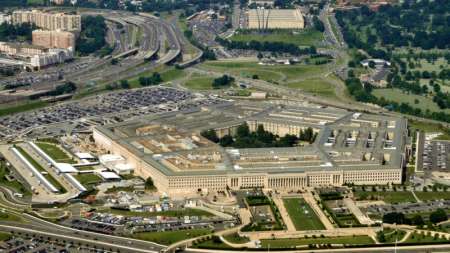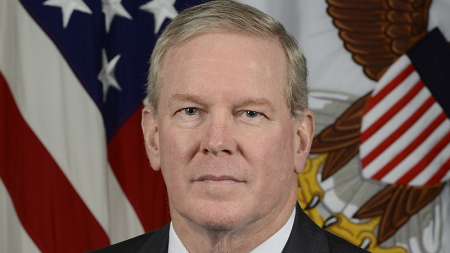Welcome to MeriTalk News Briefs, where we bring you all the day’s action that didn’t quite make the headlines. No need to shout about ‘em, but we do feel that they merit talk. […]
The Federal government is making steady progress in adopting a key anti-phishing email security protocol, installing it on systems more quickly than organizations in other sectors, if a little behind a Department of Homeland Security (DHS) deadline. […]
Welcome to MeriTalk News Briefs, where we bring you all the day’s action that didn’t quite make the headlines. No need to shout about ‘em, but we do feel that they merit talk. […]
With the Department of Veterans Affairs (VA) formally signing on last month to adopt the same electronic health records system as the Department of Defense (DoD), the two agencies are putting a lot of chips on a solution to a problem that history suggests is pretty risky. […]
Military users will soon see a tenfold boost in the Department of Defense’s telecommunications network, in a move that will support the service’s combatant commands, the Joint Information Environment (JIE), and in the process, DoD’s push toward commercial cloud services. […]
The U.S. Cyber Command is ready for its close-up. The command announced May 17 that all 133 of its Cyber Mission Teams are fully operational, capping a roughly one-month stretch that saw the arrival of a new commander, the opening of a new operations center, and the official designation of Cybercom as a full unified combatant command. […]
The Pentagon wants more hackers to take aim at its systems, launching another program that invites crowdsourced attacks from outside the Department of Defense (DoD) to help it identify and mitigate vulnerabilities in its networks and information systems. […]
For the first time in more than eight years, the House Appropriations committee shuttered its doors when it discussed budget issues with top Pentagon brass late last month. […]
You can hear the clatter from the White House as it hammers out the details of a long-awaited national cyber security strategy. But, the Department of Defense (DoD) cyber policy strategists are writing out advice to keep Federal agencies safe from hackers’ webs today. […]
The Government Accountability Office–GAO–recently released a report on an artificial intelligence forum it held in Washington, D.C. last summer. It shows that government’s thinking about the ups and downs of thinking machines. Two highlights to make you think. […]
As Department of Defense (DoD) officials testified before the Senate last week on the Pentagon’s consolidated financial audit, John Gibson, the DoD’s chief management officer, spoke on the vast potential for shared services to improve department efficiency. […]
The Department of Defense (DoD) on Wednesday sketched out plans for a swift, multibillion dollar move to a comprehensive cloud infrastructure, while leaving a lot of the details to be filled in along the way. […]
The Defense Information Systems Agency (DISA) has completed the transition of the Secret Internet Protocol Router Network (SIPRNet) to a virtual network, which increases its bandwidth tenfold, while supporting plans to extend SIPRNet to the very edges of the network via the commercial cloud. […]
New technologies and techniques are changing the cybercrime landscape in a significant way, creating new challenges for those entrusted with protecting networks and data. […]
With the passion of an evangelical, Deputy Defense Secretary Patrick Shanahan preached the Defense Department’s (DoD) “uncompromising” approach to cybersecurity last month at the AFCEA West conference in San Diego. And, his sermon included spreading the responsibility for cybersecurity to industry as a condition of winning contracts. […]
Reports like December’s White House IT Modernization Report sometimes seem like they impose requirements on agencies from above. Speaking at the ServiceNow Federal Forum in February, Danielle Metz, a policy advisor at DoD Office of Science and Tech Policy and contributor to the Modernization Report, gave us a look inside the kitchen to see how these reports come together. […]
Artificial intelligence has been applied to everything from cybersecurity and financial management to human resources and self-driving cars, so it seemed only a matter of time before it could take over video surveillance duties. And while AI, machine learning, and neural networks have made some promising strides in this area, it’s not quite the slam dunk that it might seem. […]
The Department of Defense’s (DoD) plan to accelerate adoption of commercial cloud computing saw an early result this month with the maximum $950 million contract worked out with REAN Cloud that lets DoD agencies buy cloud solutions and services directly from the company. The accelerated part of the equation resulted from the work of the Defense Unit Experimental (DIUx), which worked with REAN to enable prototyping and procurement of the full range of cloud requirements, contributing to the Other Transaction Authority (OTA) award. […]
The Pentagon and White House are chewing over what to do about fitness tracking apps, in wake of the news last week that a global heat map posted online by Strava could be used to identify the whereabouts and activities of military personnel, including those in conflict zones and other sensitive areas such as the halls of the National Security Agency. A heat map transforms data into a map in which values are represented by colors, which in this case includes the location of fitness trackers carried by government employees. […]
The Department of Defense (DoD) would like to get rid of the Common Access Card (CAC), but the problem–finding a suitable replacement. It turns out that the replacement won’t be one thing, but multiple biometric identifiers that combine to make out a person’s identity. […]
Contractor CSRA is set to launch the Defense Information Systems Agency’s (DISA) milCloud 2.0 on Feb. 1–three months ahead of schedule–combining a commercially run cloud offering within the confines of DISA’s data center. In its first phase, milCloud 2.0 will offer scalable Infrastructure as a Service (IaaS) to customers from two locations. […]
The idea of a scorecard seems like a quaint notion, conjuring black and white photos of somebody’s grandad in a fedora, licking the pencil tip before recording the latest play at the old ballgame in his program. […]
Who says things in Washington don’t move quickly? A decade after Congress initially authorized the position; the Pentagon will get its first Chief Managing Officer (CMO). John Gibson, the current Deputy Chief Managing Officer (DCMO), will step in as the first DoD CMO in February. A major target for new efficiencies, DoD has more than $2 trillion in assets and liabilities. […]
The Department of Defense’s (DoD) push toward greater adoption of commercial cloud computing could raise some questions for the military services and component agencies, including what type of cloud environment would work best while meeting unique DoD needs such as security and high-volume transactions. The Defense Information Systems Agency (DISA) took a stab at answering those questions last week while offering a plan for enterprise cloud adoption. […]
The Intelligence Advanced Research Projects Activity (IARPA) is upping the ante in automated analysis of satellite images, offering $100,000 in prizes in a competition designed to spawn breakthroughs in imagery analysis. […]
Since blockchain first appeared in 2009 as the digital ledger for Bitcoin cryptocurrency transactions, it has steadily taken the online world by storm, in the process practically becoming a synonym for security. Even if a lot of people still don’t know what it is, they’re beginning to hear it more and more. IBM, for instance, has taken to mentioning “blockchain for security” in its TV ads. And in a sure sign of pending mainstream acceptance, a “Blockchain for Dummies” book is now available. […]
Department of Defense (DoD) officials have been framing Artificial Intelligence (AI) as the center of a “new space race,” citing its growing importance in military and geopolitical operations, the investments other countries such as China have been making in AI, and Russian President Vladimir Putin’s assertion that whoever takes the lead in this field will be “ruler of the world.” […]
The Army is forging ahead with deployment of its Big Data Platform (BDP), a move that underscores the Department of Defense’s (DoD) plans for using open-source software, commercial technologies, and cloud services to get a grip on the data it collects from a wide range of sources. […]
Artificial intelligence (AI) systems are getting awfully good at the Who, What, When, Where and even How for a variety of jobs, from military operations to financial transactions to medical diagnosis and treatment. But the Why is another story. […]
Pandemic threats such as Ebola, Zika, and avian flu are not only a danger to public health, but are also viewed as potential national security threats, as the National Intelligence Council, an arm of the Director of National Intelligence, points out in its 2017 report, Global Trends: Paradox of Progress. […]
























